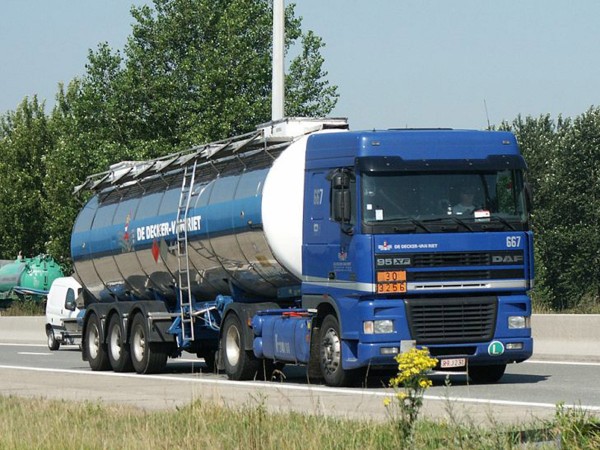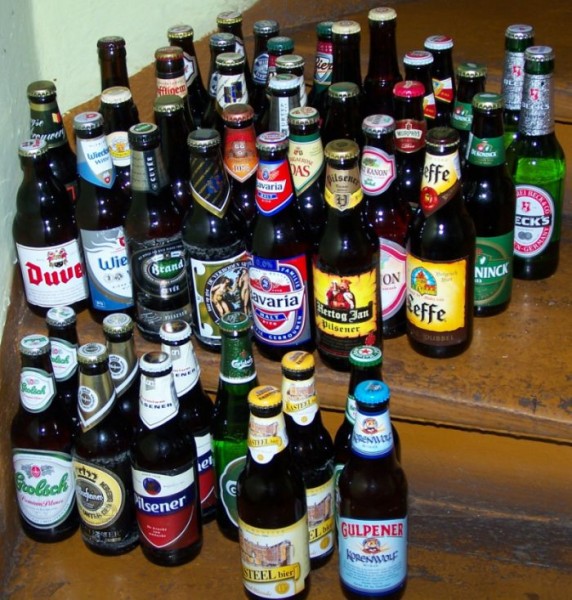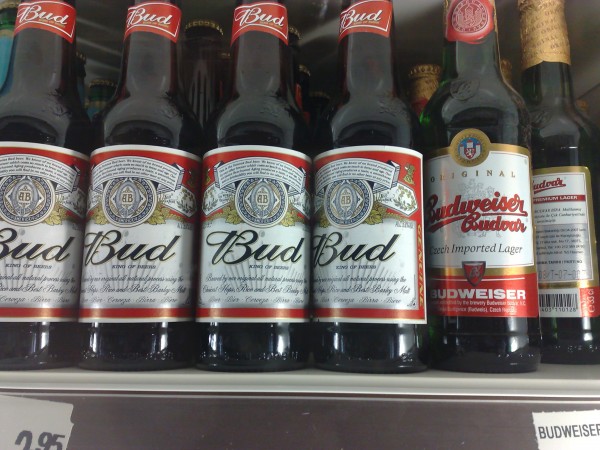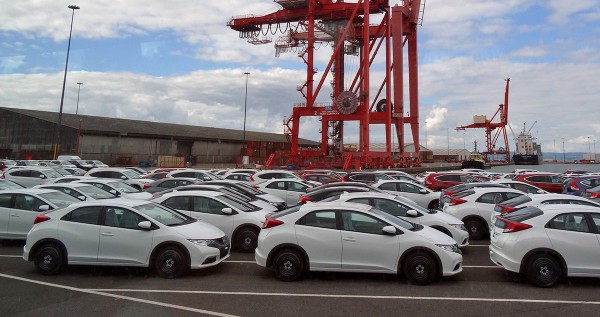 High-tech firms, such as Google, Amazon, Meta and Apple, have increasingly been gaining the attention of competition authorities across the world, and not in a good way! Over the past few years, competition authorities in the UK, USA and Europe have all opened various cases against Apple, with particular focus on its App Store (see, for example, a blog post on this site from 2021 about the Epic v. Apple case in the USA).
High-tech firms, such as Google, Amazon, Meta and Apple, have increasingly been gaining the attention of competition authorities across the world, and not in a good way! Over the past few years, competition authorities in the UK, USA and Europe have all opened various cases against Apple, with particular focus on its App Store (see, for example, a blog post on this site from 2021 about the Epic v. Apple case in the USA).
The lead-up to the €1.8 billion fine issued by the European Commission (Europe’s competition regulator) on the 4th March 2024, began in 2019 when music streaming provider, Spotify, filed a complaint against Apple, after years of being bound by the ‘unfair’ App Store rules imposed by Apple.1
 Apple’s App Store has traditionally served as the only platform through which application developers can distribute their apps to iOS users, and app developers have had no choice but to adhere to whatever rules are set by Apple. As iPhone and iPad users know, the App Store is the only way in which users can download apps to their iOS devices, establishing Apple’s App Store as a ‘gatekeeper’, as described in the European Commission’s (EC) press release expressing their initial concerns in April 2021.2 When it comes to music streaming apps, Apple not only serves as the exclusive platform for downloading these apps, but also has its own music streaming app, Apple Music, that competes with other music-streaming providers.
Apple’s App Store has traditionally served as the only platform through which application developers can distribute their apps to iOS users, and app developers have had no choice but to adhere to whatever rules are set by Apple. As iPhone and iPad users know, the App Store is the only way in which users can download apps to their iOS devices, establishing Apple’s App Store as a ‘gatekeeper’, as described in the European Commission’s (EC) press release expressing their initial concerns in April 2021.2 When it comes to music streaming apps, Apple not only serves as the exclusive platform for downloading these apps, but also has its own music streaming app, Apple Music, that competes with other music-streaming providers.
 This means that Apple holds a dominant position in the market for the distribution of music streaming apps to iOS users through its App Store. Being a dominant firm is not necessarily a problem. However, firms which hold a dominant position do have a special responsibility not to abuse their position. The EC found that Apple was abusing its dominant position in this market, with particular concerns about the rules it imposed on music streaming app developers.
This means that Apple holds a dominant position in the market for the distribution of music streaming apps to iOS users through its App Store. Being a dominant firm is not necessarily a problem. However, firms which hold a dominant position do have a special responsibility not to abuse their position. The EC found that Apple was abusing its dominant position in this market, with particular concerns about the rules it imposed on music streaming app developers.
Apple requires that app developers use Apple’s own in-app purchase system. This means that users must make any in-app purchases or subscriptions to music streaming apps through Apple’s system, subsequently subjecting app developers to a 30% commission fee. The EC found that this often led app developers to pass on these costs to consumers through an increase in prices.
Although users could still purchase subscriptions outside of the app, which may be cheaper for users as these payments will not be subject to commission, the EC found that Apple limits the ability for app developers to inform users about these alternative methods. For example, Apple prevented app developers from including links within their apps to their websites, where users could purchase subscriptions. The implications of this extends beyond increased prices for consumers, potentially resulting in a degraded user experience as well.
These restrictions imposed by Apple are examples of what are known as ‘anti-steering provisions’, and it is this conduct that led the Commission to issue the fine for the abuse of a dominant market position.
 Whilst this case has now been concluded, the spotlight is not off of Apple yet. The European Commission had required that all ‘gatekeepers’ must comply with their Digital Markets Act (DMA) by the 7 March 2024.3 One implication of this for Apple, is the requirement to allow third-party app stores on iOS devices.
Whilst this case has now been concluded, the spotlight is not off of Apple yet. The European Commission had required that all ‘gatekeepers’ must comply with their Digital Markets Act (DMA) by the 7 March 2024.3 One implication of this for Apple, is the requirement to allow third-party app stores on iOS devices.
Whilst Apple has agreed to this requirement, concerns have been raised about the accompanying measures which Apple will introduce. This includes varying terms for app developers based on whether or not they offer their app exclusively through Apple’s App Store. As outlined in a recent article,4 one implication is that app developers exceeding 1 million existing downloads through the Apple App Store will incur a fee of €0.50 per additional user if they opt to distribute their app also through a competing app store. This may act as a deterrent to popular app developers to offer their app through a competing store.
The success of a platform like an app store, relies greatly on generating ‘network effects’ – more users attract more developers, leading to more users, and so on. Therefore, not being able to offer some of the most popular apps would make it challenging for a new app store to compete effectively with Apple’s App Store.
Recently, Spotify, along with game developer Epic and others, have expressed various concerns about Apple’s compliance with the DMA in a letter to the EC.5 It will be interesting to see whether the EC is satisfied with Apple’s approach to comply with the requirements of the DMA.
References
- A Timeline: How we got here
Time to Play Fair (Spotify) (updated March 2024)
- Antitrust: Commission sends Statement of Objections to Apple on App Store rules for music streaming providers
EC Press Release (30/4/21)
- The Digital Markets Act
EC: Business, Economy, Euro DG
- Apple’s exclusionary app store scheme: An existential moment for the Digital Markets Act
VOXEU, Jacques Crémer, Paul Heidhues, Monika Schnitzer and Fiona Scott Morton (6/3/24)
- A Letter to the European Commission on Apple’s Lack of DMA Compliance
Time to Play Fair (Spotify) (1/3/24)
Articles
Questions
- Why might ‘anti-steering provisions’ that limit the ability of app developers to inform users of alternative purchasing methods be harmful to consumers?
- Why is the existence of Apple’s own music streaming service, Apple Music, particularly significant in the context of its role as the operator of the App Store?
- Reflect on the potential advantages and disadvantages of allowing third-party app stores on iOS devices, as mandated by the Digital Markets Act (DMA).
 Record fines have been imposed by the European Commission for the operation of a cartel. Truck makers, Volvo/Renault, Daimler, Iveco and DAF have been fined a total of €2.93bn. The fines were considerably higher than the previous record fine of €1.7bn on banks for rigging the LIBOR rate.
Record fines have been imposed by the European Commission for the operation of a cartel. Truck makers, Volvo/Renault, Daimler, Iveco and DAF have been fined a total of €2.93bn. The fines were considerably higher than the previous record fine of €1.7bn on banks for rigging the LIBOR rate.
Along with MAN, they were found to have colluded for 14 years over pricing. They also colluded in passing on to customers the costs of compliance with stricter emissions rules. Together these five manufacturers account for some 90% of medium and heavy lorries produced in Europe.
The companies have admitted their involvement in the cartel. If they had not, the fines might have been higher. MAN escaped a fine of €1.2bn as it had revealed the existence of the cartel to the Commission.
A sixth company, Scania, is still in dispute with the Commission over its involvement. Thus the final total of fines could be higher when Scania’s case is settled.
In addition, any person or firm adversely affected by the cartel can seek damages from any of the companies in the national courts of member states. They do not have to prove that there was a cartel.
The Commission hopes that the size of the fine will act as a disincentive for other firms to form a cartel. ‘We have, today, put down a marker by imposing record fines for a serious infringement,’ said Margrethe Vestager, the EU’s competition commissioner.
Also, by being able to exempt a cartel member (MAN in this case) from a fine if it ‘blows the whistle’ to the authorities, it will help to break existing cartels.
There are some other major possible cartels and cases of abuse of market power currently being considered by the Commission. These include Google and whether unfair tax breaks were given to Apple and Amazon by Ireland and Luxembourg respectively.
Articles
Price-Fixing Truck Makers Get Record E.U. Fine: $3.2 Billion New York Times, James Kanter (19/7/16)
 Truckmakers Get Record $3.23 Billion EU Fine for Cartel Bloomberg, Aoife White (19/6/16)
Truckmakers Get Record $3.23 Billion EU Fine for Cartel Bloomberg, Aoife White (19/6/16)
EU fines truckmakers a record €2.93bn for running 14-year cartel Financial Times, Peter Campbell, Duncan Robinson and Alex Barker (19/7/16)
Truckmakers fined by Brussels for price collusion The Guardian, Sean Farrell (19/7/16)
Europa Press Release
Antitrust: Commission fines truck producers € 2.93 billion for participating in a cartel European Commission (19/7/16)
Information
Competition DG European Commission
Questions
- How have the various stakeholders in the truck manufacturing industry been affected by the operation of the cartel?
- What incentive effects are there, (a) for existing cartel members and (b) for firms thinking of forming a cartel, in the fining system used by the European Commission?
- Unlike the USA, the EU cannot jail managers for oligopolistic collusion. Compare the relative effectiveness of large fines and jail sentences in deterring cartels.
- What determines the profit-maximising price(s) for a cartel?
- Apart from the threat of action by the competition authorities, what determines the likely success of a cartel in being able to fix prices?
- Choose two other cases of possible cartels or the abuse of market power being examined by the European Commission. What is the nature of the suspected abuse?
 On 13th October 2015 the management team of SABMiller (the second largest brewing business in the world) agreed in principle to a $108 billion takeover offer from AB-InBev (the largest brewing business in the world). When the announcement was made it was clear that the global nature of the businesses involved meant that the deal would have to be cleared by numerous competition authorities from all over the world. This blog focuses on the latest developments in the European Union.
On 13th October 2015 the management team of SABMiller (the second largest brewing business in the world) agreed in principle to a $108 billion takeover offer from AB-InBev (the largest brewing business in the world). When the announcement was made it was clear that the global nature of the businesses involved meant that the deal would have to be cleared by numerous competition authorities from all over the world. This blog focuses on the latest developments in the European Union.
The relevant legislation in Europe that addresses Mergers and Acquisitions (M&As) is the Merger Regulation that came into force on the 1st May 2004. This legislation gives the European Commission (EC) the power to investigate M&As that are said to have an ‘EU dimension’ as they exceed certain turnover thresholds.
Businesses involved in an M&A that meet the ‘EU dimension’ are obliged to pre-notify the EC and obtain clearance before going ahead with the deal. AB-InBev formally notified the European Authorities of its intention to acquire SABMiller on 30th March 2016.
Once official notification has been received, the EC launches a Phase 1 investigation which usually has to be completed in 25 working days. The investigation focuses on whether the M&A would:
“significantly impede effective competition, in the internal market or in a substantial part of it, in particular as a result of the creation or strengthening of a dominant market position” (Article 2(2) and (3))
This is often referred to as the ‘SIEC’ test. In addition to worries that an M&A may create or strengthen ‘single-firm dominance’, the ‘SIEC’ test is also used to test for ‘collective dominance’. Collective dominance is the possibility that the M&A might make either formal or tacit collusion more likely.
The European Competition has expressed concerns that the acquisition of SABMiller by AB-InBev might significantly impede effective competition in the premium lager market. Unconditional clearance of the deal would result in the same business owning many of the best-selling premium lager brands in Europe, including Stella Artois, Beck’s, Budweiser, Corona, Peroni and Grolsh.
As part of the Phase 1 investigation, the management of the businesses involved with the M&A can have ‘State of Play meetings’ with officials from the EC. At these meetings EC staff can raise any competition concerns they have with the deal and the businesses can respond by offering to take specific actions that they hope will address any issues. The most common action is a commitment to sell of some of the assets of the newly merged business.
Any commitments must be made no later than 20 days following the formal notification of the merger and they result in the time frame for the Phase 1 investigation being extended from 25 to 35 working days.

On the 8th April, AB-InBev made a commitment to the EC to sell the SABMiller brands Peroni, Grolsch and Meantime as a potential remedy for their competition concerns. A price of €2.55 billion for the deal was agreed with Asahi – the largest Japanese brewery. The sale of the brands is subject to the acquisition of SABMiller by AB-InBev being completed. Following this commitment, the EC extended the deadline for the Phase 1 investigation to May 24th.
It appears that at subsequent State of Play meetings EC officials expressed concerns that this commitment was not enough to address fully their worries over the impact of the acquisition on competition.
On April 27th (just inside the 20-working-day deadline) AB-InBev made an extended package of commitments to the European Union authorities to try to remedy their continued concerns. The commitments now include the sale of the SABMiller breweries in Eastern Europe (Poland, Hungary, Romania, the Czech Republic and Slovakia). Part of this sale would also include the Pilsner Urquell brand – a best-selling beer in the Czech Republic – and the Drecher brand – a best-selling beer in Hungary.
If the EC decides that the deal still raises concerns and could significantly impede effective competition in the single market, then the acquisition will be referred for a Phase 2 investigation. Phase 2 investigations are far more detailed than at Phase 1 and place far greater burdens on the parties involved. They also take much longer. The initial deadline for completion is 90 working days, but this can be extended to 125 working days in certain circumstances. Taking holidays into account they could last for 6 to 7 months before coming to a final decision.
This may help to explain why AB-InBev is willing to sell off nearly all of SABMiller’s European assets in the hope of obtaining clearance for a deal at the end of the Phase 1 investigation. The company aims to finalise the takeover in autumn of this year and is therefore very keen to avoid any regulatory delay created by a more detailed Phase 2 investigation.
Its willingness to sell off the European assets also confirms AB InBev’s main motive for its acquisition of SABMiller – to gain access to new and growing markets in Africa and Latin America.
It will be interesting to see the outcome of the Phase 1 investigation on May 24th.
Articles
AB InBev accepts Asahi offer for Peroni and Grolsch Independent (19/4/16)
Asahi laps up Peroni and Grolsch to smoothe AB InBev’s SABMiller deal The Telegraph (19/4/16)
Peroni and Grolsch sold as AB Inbev and SABMiller deal nears The Guardian (19/4/16)
AB InBev offers more SAB Europe assets to win EU deal approval Reuters (29/4/16)
Peroni and Grolsch brands sold by AB InBev to Asahi BBC News (19/4/16)
Questions
- What threshold criteria have to be met in order for a merger to be classed as having a European dimension?
- Discuss the different types of decision that can be made by the European Commission at the end of a Phase 1 investigation.
- Compare the notification system used by the European Commission with the one used by the UK competition authorities.
- Discuss some of the market conditions that would make either formal or tacit collusion more likely.
- Discuss some factors that might make it in the interests of society for an M&A to go ahead?
- To what extent does the evidence suggest that M&As have delivered the benefits predicted by the managers of the businesses involved?
 The European Commission has recently carried out a number of investigations into the various sectors of the industry that supplies parts to car manufacturers. Firms have been found guilty of engaging in anti-competitive practices in the supply of bearings, wire harnesses and the foam used in car seats. The latest completed case relates to firms that supply alternators and starters – both important components in a car engine.
The European Commission has recently carried out a number of investigations into the various sectors of the industry that supplies parts to car manufacturers. Firms have been found guilty of engaging in anti-competitive practices in the supply of bearings, wire harnesses and the foam used in car seats. The latest completed case relates to firms that supply alternators and starters – both important components in a car engine.
On January 27th the European Commission announced that it was imposing fines on some Japanese manufacturing companies. Melco (Mitsubishi Electric), Hitachi and Denso were found guilty of participating in a cartel between September 2004 and February 2010 that restricted competition in the supply alternators and starters to car manufacturers.
The Commission gathered evidence showing that senior managers in the three businesses held discussions about how to implement various anti-competitive practices. These either took place on the phone or at meetings in offices/restaurants. In particular the firms agreed:
|
|
| • |
to co-ordinate their responses to tenders issued by car manufacturers. This involved them agreeing on the price each firm would bid. |
| • |
to exchange commercially sensitive information about pricing and marketing strategies. |
| • |
which of them would supply each car manufacturer with alternators and starters. |
These activities are in breach of Article 101 of the Treaty on the Functioning of the European Union (2009). The European Commissioner for Competition, Margrethe Vestager, stated that:
“Today’s decision sanctions three car part producers whose collusion affected component costs for a number of car manufacturers selling cars in Europe, and ultimately European consumers buying them. If European consumers are affected by a cartel, the Commission will investigate it even if the cartel meetings took place outside of Europe”
The fines imposed on the three businesses were as follows:
– Denso €0
– Hitachi €26 860 000
– Melco €110 929 000
How are these fines calculated? When calculating the size of the fine to impose on a firm the Commission takes into account a number of factors. These include:
|
|
| • |
the size of its annual sales affected by the anti-competitive activities. |
| • |
its market share. |
| • |
the geographical area of its sales. |
| • |
how long it had taken part in the cartel. |
| • |
whether it had previously been found guilty of engaging in anti-competitive practices. |
| • |
if it initiated the cartel in the first place i.e. was it the ring leader? |
In this particular case the size of the fine imposed on both Hitachi and Melco was increased because they had both previously been found guilty of breaking EU competition rules.
If a member of the cartel comes forward with information that helps the Commission with its investigation, a reduction in the size of the fine can be applied under a provision called a Leniency Notice (2006). Timing as well as the quality of the information provided influences the size of this reduction. For example, only the first firm to come forward with relevant information can receive a reduction of up to 100% i.e. obtain full immunity. This explains how Denso could be found guilty but not have to pay a fine. (This firm’s initial approach to the Commission actually triggered the investigation.) Any subsequent firms that come forward with information receive smaller fine reductions. Hitachi and Melco received reductions of 30% and 28% respectively.
If a firm accepts the Commission’s decision a further reduction of up to 10% can be applied. This is called a Settlement Notice (2008). All three firms were awarded the full 10% discount in this case.
The European Commission is currently investigating the behaviour of firms that supply car thermal systems, seatbelts and exhaust systems.
Articles
Car parts price-fixing fines for Hitachi and Mitsubishi Electric BBC News 27/01/16
EU antitrust regulators to fine Japanese car part makers: sources Tech News 26/01/16
Mitsubishi Electric and Hitachi get $150 EU cartel fine Bloomberg 27/01/16
EU fines Mitsubishi Electric, Hitachi for car part cartel Reuters 27/1/16
Questions
- What market conditions would make the formation of a cartel more likely?
- Draw a diagram to illustrate the impact of a profit maximising cartel agreement on the price, output and profit in an industry.
- Draw a diagram to illustrate the incentive that each firm has to cheat on an agreed cartel price and output.
- Why did the European Commission introduce Settlement Notices?
 10 of the 17 eurozone countries have agreed to adopt a financial transactions tax (FTT), often known as a ‘Tobin tax’ after James Tobin who first proposed such a tax back in 1972. The European Commission has backed the proposal, which involves levying a tax of 0.1% on trading in bonds and shares and 0.01% on trading in derivatives.
10 of the 17 eurozone countries have agreed to adopt a financial transactions tax (FTT), often known as a ‘Tobin tax’ after James Tobin who first proposed such a tax back in 1972. The European Commission has backed the proposal, which involves levying a tax of 0.1% on trading in bonds and shares and 0.01% on trading in derivatives.
The 10 countries, France, Germany, Austria, Belgium, Greece, Italy, Portugal, Slovakia, Slovenia and Spain, and possibly also Estonia, hope to raise billions of euros from the tax, which will apply whenever at least one of the parties to a trade is based in one of the 10 (or 11) countries.
On several occasions in the past on this site we’ve examined proposals for such a tax: see, for example: Pressure mounts for a Tobin tax (update) (Nov 2011), A ‘Robin Hood’ tax (Feb 2010), Tobin or not Tobin: the tax proposal that keeps reappearing (Dec 2009) and A Tobin tax – to be or not to be? (Aug 2009). Tobin taxes are also considered in Economics (8th ed) (section 26.3) and Economics for Business (5th ed) (section 32.4).
As we noted last year in the blog Is the time right for a Tobin tax?, the tax is designed to be too small to affect trading in shares or other financial products for purposes of long-term investment. It would, however, dampen speculative trades that take advantage of tiny potential gains from very short-term price movements. Such trades account for huge financial flows between financial institutions around the world and tend to make markets more volatile. The short-term dealers are known as high-frequency traders (HFTs) and their activities now account for the majority of trading on exchanges. Most of these trades are by computers programmed to seek out minute gains and respond in milliseconds. And whilst they add to short-term liquidity for much of the time, this liquidity can suddenly dry up if HFTs become pessimistic.
Supporters of the tax claim that it will make a major contribution to tackling the deficit problems of many eurozone countries. Critics claim that it will dampen investment and growth and divert financial business away from the participating countries. The following articles look at the arguments.
EU Commission backs 10 countries’ transaction tax plan Reuters, Jan Strupczewski (23/10/12)
EU ‘Robin Hood’ tax gets the nod fin24 (23/10/12)
European financial transaction tax moves step closer The Guardian, Larry Elliott (23/10/12)
Financial transaction tax for 10 EU states BBC News (23/10/12)
Rejecting a Robin Hood tax would be a spectacular own goal The Guardian, Max Lawson (11/10/12)
More than 50 financiers back Robin Hood Tax The Robin Hood Tax (23/10/12)
Topical Focus – Transaction Taxes Tax-News (23/10/12)
Could a transactions tax be good for capitalism? BBC News, Robert Peston (3/10/11)
A Tax to Kill High Frequency Trading Forbes, Lee Sheppard (16/10/12)
Questions
- Explain how the proposed financial transactions tax will work.
- Why would many parties to trades who are not based in one of the 10 participating countries still end up paying the tax?
- What are likely to be the advantages and disadvantages of the proposed tax?
- Is it appropriate to describe the proposed FTT as a ‘Robin Hood Tax’?
- How does a financial transactions tax differ from the UK’s stamp duty reserve tax?
- Explain why the design of the stamp duty tax has prevented the flight of capital and trading from London. Could a Tobin tax be designed in such a way?
- What are HFTs and what impact do they have on the stability and liquidity of markets?
- Would it be desirable for the FTT to ‘kill off’ HFTs?
 High-tech firms, such as Google, Amazon, Meta and Apple, have increasingly been gaining the attention of competition authorities across the world, and not in a good way! Over the past few years, competition authorities in the UK, USA and Europe have all opened various cases against Apple, with particular focus on its App Store (see, for example, a blog post on this site from 2021 about the Epic v. Apple case in the USA).
High-tech firms, such as Google, Amazon, Meta and Apple, have increasingly been gaining the attention of competition authorities across the world, and not in a good way! Over the past few years, competition authorities in the UK, USA and Europe have all opened various cases against Apple, with particular focus on its App Store (see, for example, a blog post on this site from 2021 about the Epic v. Apple case in the USA). Apple’s App Store has traditionally served as the only platform through which application developers can distribute their apps to iOS users, and app developers have had no choice but to adhere to whatever rules are set by Apple. As iPhone and iPad users know, the App Store is the only way in which users can download apps to their iOS devices, establishing Apple’s App Store as a ‘gatekeeper’, as described in the European Commission’s (EC) press release expressing their initial concerns in April 2021.2 When it comes to music streaming apps, Apple not only serves as the exclusive platform for downloading these apps, but also has its own music streaming app, Apple Music, that competes with other music-streaming providers.
Apple’s App Store has traditionally served as the only platform through which application developers can distribute their apps to iOS users, and app developers have had no choice but to adhere to whatever rules are set by Apple. As iPhone and iPad users know, the App Store is the only way in which users can download apps to their iOS devices, establishing Apple’s App Store as a ‘gatekeeper’, as described in the European Commission’s (EC) press release expressing their initial concerns in April 2021.2 When it comes to music streaming apps, Apple not only serves as the exclusive platform for downloading these apps, but also has its own music streaming app, Apple Music, that competes with other music-streaming providers.  This means that Apple holds a dominant position in the market for the distribution of music streaming apps to iOS users through its App Store. Being a dominant firm is not necessarily a problem. However, firms which hold a dominant position do have a special responsibility not to abuse their position. The EC found that Apple was abusing its dominant position in this market, with particular concerns about the rules it imposed on music streaming app developers.
This means that Apple holds a dominant position in the market for the distribution of music streaming apps to iOS users through its App Store. Being a dominant firm is not necessarily a problem. However, firms which hold a dominant position do have a special responsibility not to abuse their position. The EC found that Apple was abusing its dominant position in this market, with particular concerns about the rules it imposed on music streaming app developers.  Whilst this case has now been concluded, the spotlight is not off of Apple yet. The European Commission had required that all ‘gatekeepers’ must comply with their Digital Markets Act (DMA) by the 7 March 2024.3 One implication of this for Apple, is the requirement to allow third-party app stores on iOS devices.
Whilst this case has now been concluded, the spotlight is not off of Apple yet. The European Commission had required that all ‘gatekeepers’ must comply with their Digital Markets Act (DMA) by the 7 March 2024.3 One implication of this for Apple, is the requirement to allow third-party app stores on iOS devices.




